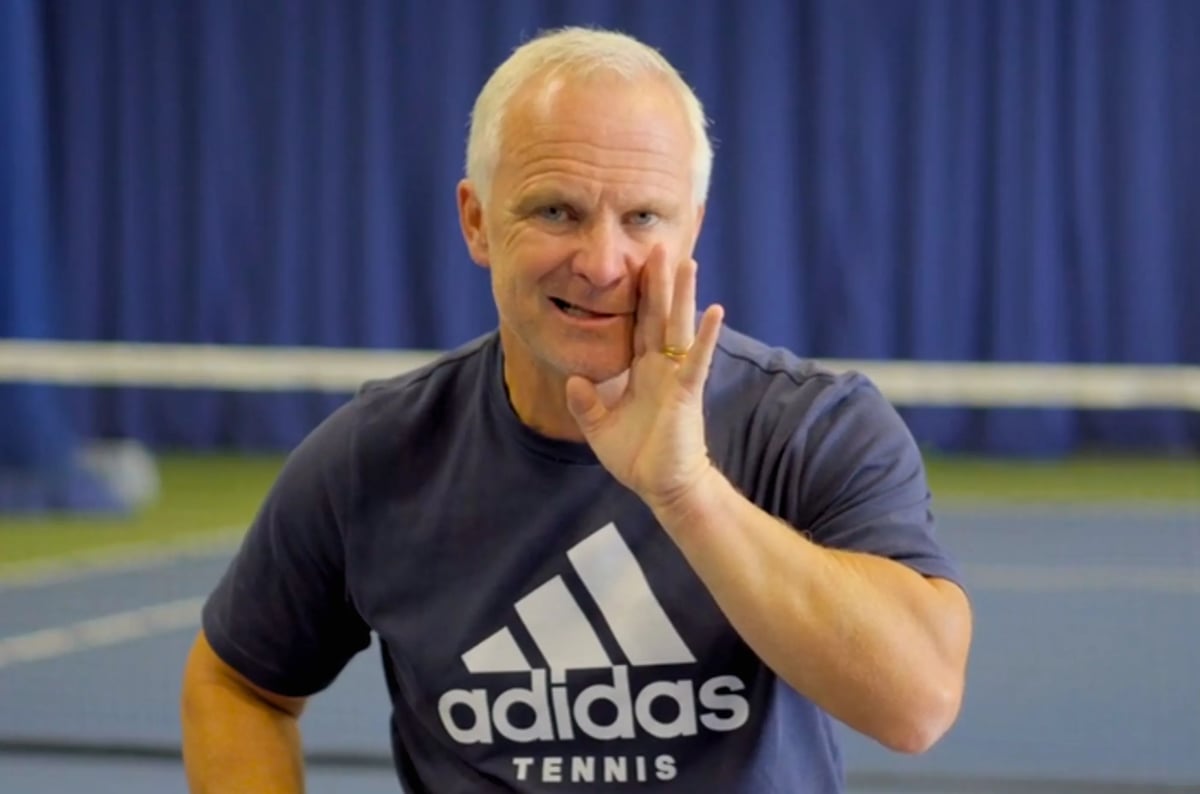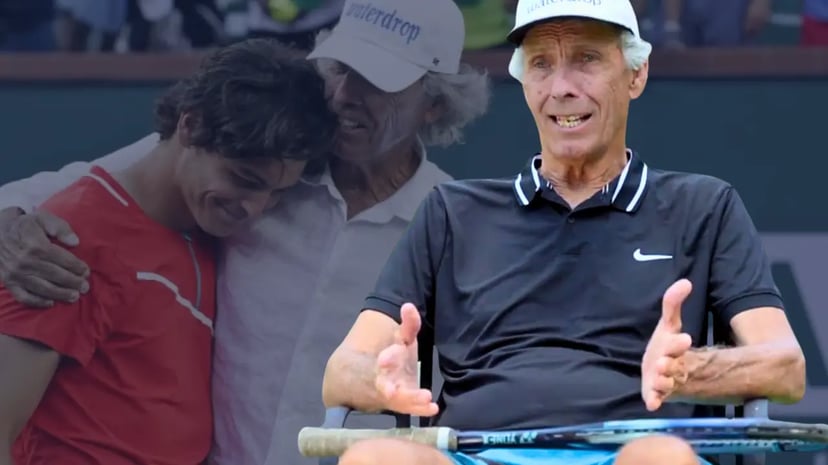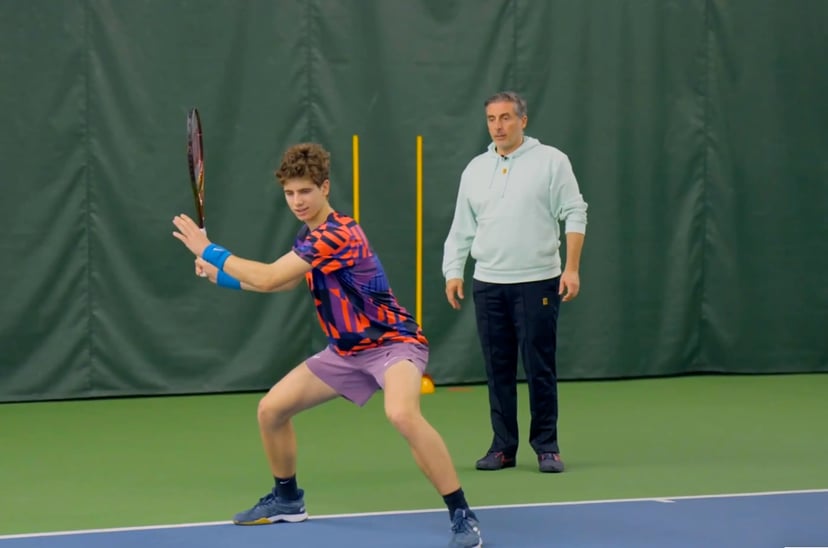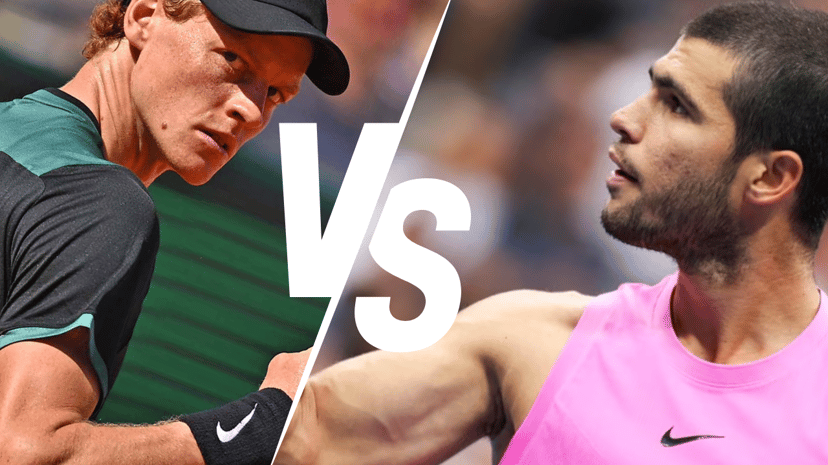
If you’ve been following professional tennis, you probably saw Jack Draper’s incredible run at Indian Wells, where he clinched his first Masters 1000 title by defeating Carlos Alcaraz and Holger Rune. Now ranked No. 7 in the world, Draper’s rise over the past six months has been remarkable—reaching the US Open semifinals, making the fourth round of the Australian Open despite recovering from injury, and now securing a Masters Series title.
But what’s even more fascinating than his recent success is the long-term development behind it. Jack’s junior coach, Justin Sherring, played a crucial role in shaping his game from the age of five to sixteen. Justin is still involved in Draper’s development today, offering insight and guidance when needed. Over the course of 11 years, he meticulously crafted Draper’s game style—one that was aggressive, adaptable, and future-proofed for the highest levels of tennis.
Justin’s coaching methods, philosophy, and unique drills are all available on Coach Life, where he shares 27 exclusive training videos detailing exactly how he built Jack Draper into a world-class player. In this blog, we’ll break down what makes Draper’s game so effective, how Justin helped develop his signature weapons, and what players of all levels can learn from this process.
Check Justing Sherring Profile on Coachlife
Building an Aggressive Game Style: The Key Principles
1. A Heavy, Devastating Forehand
One of the first things you notice about Draper’s game is his heavy, high-kicking forehand. It’s a shot that rises above his opponent’s shoulders, making it difficult to attack.
Justin emphasized the importance of racket head speed and hitting the ball with full commitment. This wasn’t about playing it safe—Jack was encouraged to swing as hard as possible and trust that consistency would come later. The goal was to develop a forehand that could dictate points against even the best players.
Training Focus:
• Daily racket head speed drills to generate more power and spin.
• Encouraging aggressive shot-making—it was okay to miss, as long as he was hitting with intent.
• Learning to adjust margins and spin over time, rather than playing conservatively.
During Indian Wells, Draper’s forehand was on full display. He could hit it anywhere he wanted, at will, and it was simply too heavy for Alcaraz and Rune to handle. If you watched Indian Wells, the video below will give you goosebumps.
Racket Head Speed on the Forehand - Jack Draper Drills
Description: Developing weapons and explosive power with practical drills used by Jack Draper during his development
2. The Buggy Whip Forehand for Defense and Offense
The buggy whip forehand is a shot I’ve always been obsessed with, and it’s something Justin specifically trained Draper to use in defensive situations. It allows a player to generate massive topspin from compromised positions, making it a crucial tool for survival on the baseline.
But Draper takes it a step further—he doesn’t just use the buggy whip defensively; he uses it strategically to pull opponents off the court. If you watch his matches, you’ll see him hitting sharp cross-court angles with the buggy whip, forcing opponents to stretch wide, similar to how Rafael Nadal weaponizes his forehand.
Training Focus:
• Using the buggy whip in defensive situations to neutralize strong attacks.
• Mastering angle creation with the buggy whip to pull players off court.
• Ensuring maximum racket head speed for both defense and offense.
Below is the link to a Coach Life video where Justin breaks down exactly how he taught Draper this technique.
Wide Defensive "Buggy Whip" or "Reverse Forehand"
Description: The "Buggy Whip" has been used by some of the greatest players of all time to create power, spin and racket head speed in defensive situations.
3. The Flat, Laser-Like Backhand
Another defining feature of Draper’s game is the contrast between his heavy, topspin forehand and his flat, penetrating backhand. This variation keeps opponents off balance, making it incredibly difficult to find a rhythm against him.
Justin was intentional about developing a flat, aggressive backhand that could drive through the court rather than looping up. This is a style of backhand used by players like Taylor Fritz and Daniil Medvedev, and it has its roots in the famous Robert Lansdorp backhand, which was taught to legends like Lindsay Davenport and Maria Sharapova.
Training Focus:
• Learning to hit through the ball with a compact, efficient swing.
• Using the backhand as a contrasting weapon to the heavy forehand.
• Training to hit deep, flat drives that take time away from opponents.
Justin explains this development in detail in the video below, where you can see Draper’s backhand training in action.
Flat Attacking Backhand - as Taught to Jack Draper
Description: Specialised backhand technique used by many top players to penetrate through the court
Developing a Champion’s Mindset: Visualization and Mental Training
Beyond technique, one of the most powerful aspects of Justin’s coaching was his approach to the mental game.
Every day, Justin would have Draper visualize himself playing against the greatest players in the world—Novak Djokovic, Rafael Nadal, and Roger Federer. At the time, Carlos Alcaraz wasn’t yet a professional player, so the focus was on competing against the legends of the sport. Jack wasn’t just training for his next junior tournament—he was mentally preparing to battle the best players in history.
This process of mental imagery and visualization was critical in building self-belief. Justin constantly reinforced long-term thinking, shifting the focus away from short-term results and toward developing a game that would succeed on the pro tour.
Today, Justin applies the same techniques to the next generation of players. On Coach Life, he works with one of the top juniors in the UK, demonstrating exactly how he structures warm-ups using shadow point routines and mental imagery. These videos provide a fascinating look at how belief is instilled in young players—the same belief that helped Jack Draper reach the top.
Training Focus:
• Shadow points and visualization drills—imagining match scenarios against the best players in the world.
• Long-term focus on building weapons, not just winning junior matches.
• Ignoring short-term results and trusting the process of skill development.
This mental training framework is something all young players should adopt. Success isn’t about immediate results—it’s about building the right mindset to compete at the highest level.
Racket and Ball Warm-up with Mental Imagery
Description: Combining movement drills with racket work and shadow tennis to get the player fully engaged
Justin Sherring's Brilliant Core Core Coaching Philosophy
Description: This Video Focuses On Pushing Players Through Varied, Challenging Scenarios In Practice To Mimic Match Conditions, Fostering Versatility, And Encouraging Mental Toughness By Visualizing Competition At Major Tournaments
The Importance of Specializing Your Training
A mistake many young players and coaches make is spending equal time on every shot. Justin approached things differently—he dedicated 70-80% of training time to just two shots: the serve and the forehand.
The reason? These are the shots that win points at the highest level.
Rather than trying to be “solid” in every area, Justin focused on building weapons—shots that could do serious damage to top players.
This is an important lesson for all players: Identify your key strengths and dedicate extra time to developing them. We saw the kick serve being a huge focus for Pat Rafter in developing a serve-and-volley game, and touch, variety, and speed around the court as major priorities for Andy Murray.
Success isn’t about being good at everything—it’s about being great at the right things.
Training volume and Structure with a Teenage Jack Draper
Description: 70% of sessions were spent developing the serve and forehand as weapons
Mastering the Return of Serve
If you’ve watched any of Jack Draper’s matches, you’ll notice how hard it is to ace him. He gets so many returns back in play, and it’s been a huge factor in his success. Along with his serve, his return game has been one of his biggest weapons, allowing him to stay in rallies and immediately apply pressure.
One of the most valuable aspects of Justin Sherring’s coaching content is his approach to the return of serve. His two return of serve videos on Coach Life are among the best breakdowns of return technique you’ll find anywhere. They cover everything from court positioning to racket preparation, footwork, and technical execution.
These videos are an absolute must-watch for anyone looking to improve their return. Justin’s attention to detail is incredible, and his unique approach to feeding the ball allows him to closely analyze footwork and technique up close.
Key Takeaways from Justin’s Return of Serve Coaching:
✅ Court positioning – Understanding where to stand depending on the server’s style.
✅ Racket setup – Ensuring the racket is in the right position before the serve is hit.
✅ Footwork mechanics – How to move efficiently into the return and recover for the next shot.
✅ Using the buggy whip forehand on wide returns – Just as Draper does in matches, Justin explains how to use this technique to return deep and stay in the point.
✅ Unique feeding method – Justin stands right up close to the player, bouncing balls in front of them to watch every detail of their movement and contact point.
These two return of serve videos are incredibly detailed and packed with technical insights that can transform how you approach returns.
Return of Serve Technique and Footwork
Description: Where to Feed for Repetition, Where to Position Yourself and Brilliant Technical Advice
How to Return a Wide Slice Serve
Description: Brilliant, detailed technical guidance on executing the contact point during returns and mastering the "Buggy Whip" forehand.
Final Thoughts: What We Can Learn from Justin’s Coaching
Jack Draper’s success is a testament to long-term player development, and Justin Sherring’s coaching philosophy is a masterclass in building a game style with a purpose.
Rather than molding every player into the same generic model, Justin identified Jack’s strengths, future-proofed his weapons, and trained with a clear vision in mind.
If you’re serious about improving your own game, take inspiration from this approach:
• Develop a clear game style and structure your training around it.
• Spend most of your time developing weapons, not just maintaining every stroke equally.
• Use visualization and mental training to build confidence.
• Accept mistakes as part of the process—hitting big is the only way to develop real power.
• Think long-term—training isn’t about short-term results, it’s about building a game that will last.
Want to see exactly how Justin trained Draper? Check out Coach Life, where we have 27 exclusive videos from Justin breaking down his coaching methods, drills, and philosophy.


